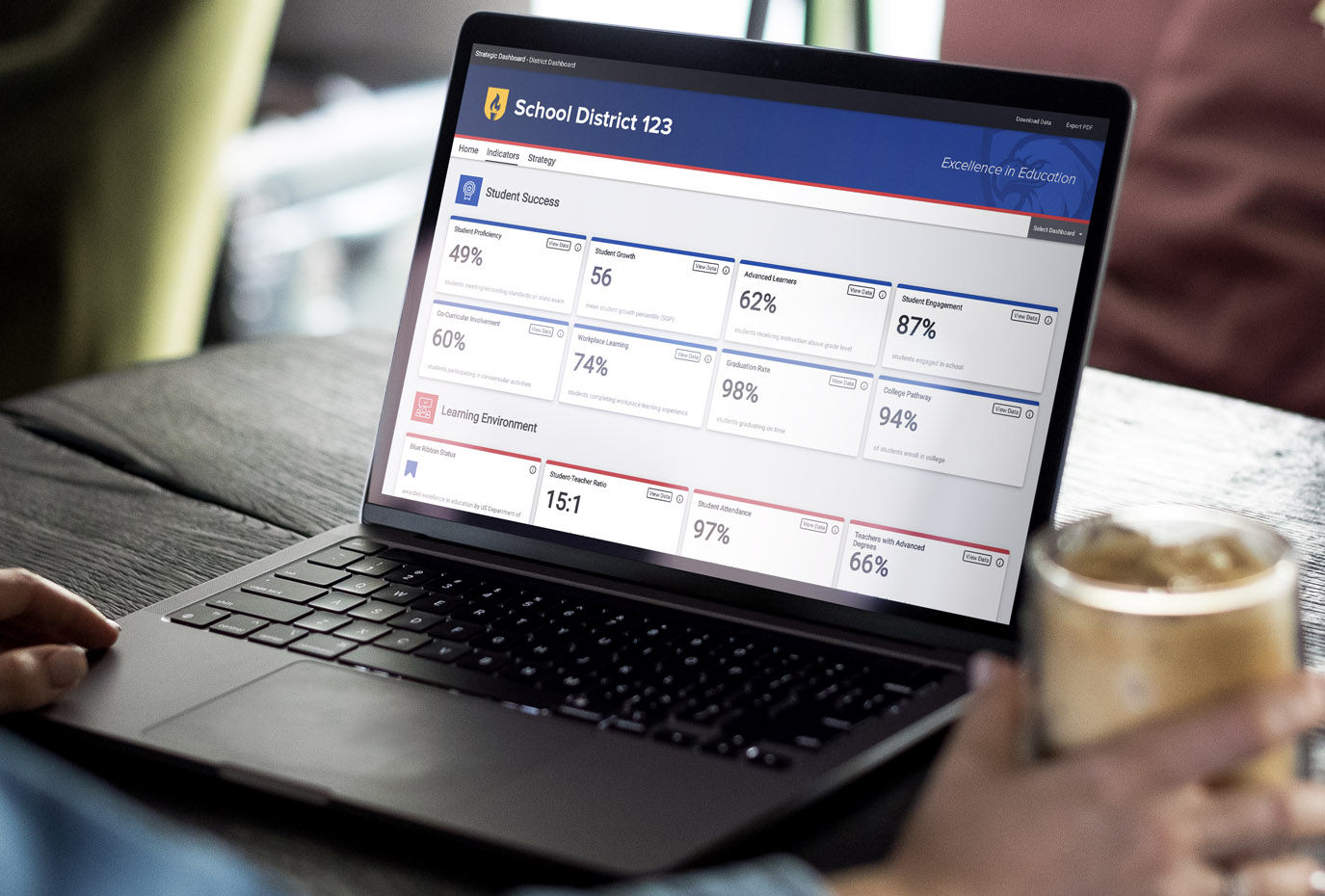As a school district administrator, you are constantly faced with the challenge of managing a large and complex educational organization. With multiple schools, departments, and programs to oversee, it can be difficult to keep track of all that happens and to make informed decisions. One powerful tool that can help you meet this challenge is a Strategic Dashboard from ECRA Group.
A strategic dashboard is a visual representation of key performance indicators (KPIs) that are important to your school district. It allows you to see, at a glance, how your district is performing in key areas.

Why a Strategic Dashboard is Important for School Districts
A strategic dashboard is an essential tool for school district administrators because it helps you to:
- Make informed decisions: With all of the data you need to make decisions in one place, a strategic dashboard allows you to see the big picture and identify trends and patterns. This can help you make more informed decisions about how to allocate resources, improve student achievement, and promote staff development.
- Identify areas for improvement: By providing a clear view of how your district is performing in key areas, a strategic dashboard can help you identify areas where you need to focus your efforts. You can use the data to set specific goals and targets, and track progress over time to see if you are achieving those goals.
- Track progress over time: A strategic dashboard allows you to track key performance indicators over time, so you can see how your district is improving (or not) in different areas. This can help you identify areas where you need to make changes, and track the impact of your efforts.
What to Include in a Strategic Dashboard
When designing a strategic dashboard for your school district, it is important to include the key performance indicators that are most important to your organization. Some examples of KPIs that you might want to include are:
- Student achievement: This could include measures such as graduation rates, test scores, and attendance.
- Budget: This could include measures such as revenue, expenses, and fund balances.
- Staff development: This could include measures such as staff retention, professional development, and evaluations.
- Facilities and infrastructure: This could include measures such as building maintenance, energy efficiency, and technology infrastructure.
Once you have identified the key performance indicators that are most important to your organization, you can use them to create a strategic dashboard that provides a clear and concise view of the data.
How to Implement a Strategic Dashboard with ECRA Group
Implementing a strategic dashboard in your school district may seem like a daunting task, but with ECRA’s Strategic Dashboard, it is a relatively straightforward process. As part of partnering with ECRA, our experts will help guide your district along the process of setting up a dashboard. The key steps to take when implementing a Strategic Dashboard will include:
- Identifying the key performance indicators: As discussed earlier, the first step in implementing a strategic dashboard is to identify the key performance indicators that are most important to your organization.
- Collecting the data: Once you have identified the key performance indicators, you will need to collect the data that is needed to populate the dashboard. This may involve working with different departments and programs within your district to gather the data.
- Monitoring and updating: Once the dashboard is implemented, it is important to monitor its performance and update it regularly to ensure that it is providing the most accurate and up-to-date information.
CUSD 200 Case Study
Interested in learning from a school district that uses a Strategic Dashboard from ECRA? This video, featuring CUSD200 in Illinois, illustrates how the dashboard impacts decisions and is vital to board and community reporting.







